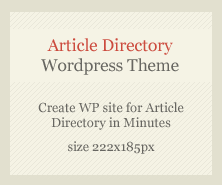In today’s fast-paced business environment, where time is money and accuracy is paramount, companies are embracing automation to streamline core operations. An all-in-one HRMS software solution unifies disparate functions—HR, payroll, and finance—into a single cohesive ecosystem. For businesses in Malaysia, this digital leap means fewer errors, faster processing, and smarter compliance.
What Is an All-in-One HR, Payroll & Accounting Software?
An all-in-one system is a consolidated digital platform that incorporates human resource software, payroll software, accounting software, and more. Unlike standalone applications that require complex integrations, this suite brings modules like Leave Management Software, Claims Management Software, and E-Invoicing Software under one roof.
It is a robust solution designed to simplify and automate workforce, financial, and operational management—eliminating redundancies and minimizing manual intervention.
Benefits of Using a Unified Platform
With a unified system, data silos disappear. Employee attendance updates automatically reflect in payroll; financial transactions sync directly with the general ledger. By using time attendance software and mobile attendance apps, businesses track workforce presence in real time. Payroll outsourcing services also become easier to manage when paired with centralized data.
This integration translates into improved transparency, faster reporting, and a major reduction in administrative overhead.
HR Management Features in All-in-One Software
Advanced HRMS software solutions go beyond basic employee records. They streamline recruitment via an integrated Applicant Tracking System, accelerate onboarding, and automate document management. Modules like Performance Appraisal Software and Learning Management System support career development and performance tracking, turning HR into a driver of growth and engagement.
Payroll Management Essentials
Payroll software is at the heart of every unified system. It handles statutory compliance—including EPF, SOCSO, EIS, and PCB—while automating salary calculations and payslip distribution. Integration with time attendance software ensures precise hour tracking, while data from leave management software adjusts salary figures based on absenteeism or late arrivals.
For businesses seeking efficiency, payroll outsourcing services are also supported, enabling third-party providers to access real-time payroll data securely.
Leave and Attendance Tracking
Integrated leave management software provides customizable leave policies, automated approval flows, and real-time balance tracking. Coupled with biometric fingerprint readers and mobile attendance tools, businesses can track employee attendance accurately from any location. These inputs are instantly recorded within the Time Attendance Software, ensuring accurate wage computation.
Claims and Expense Management
Manual reimbursements are outdated. Modern platforms include claims management software for seamless digital submission, approval, and reimbursement of employee expenses. Whether it’s travel, meals, or mileage, everything is documented and audit-ready—no spreadsheets or physical receipts required.
Accounting Module Capabilities
The built-in accounting softwarehandles general ledger management, accounts payable and receivable, bank reconciliation, and financial reporting. With integrations to project cost management software, companies can track project budgets, control costs, and improve profitability with pinpoint precision.
E-Invoicing Integration
In line with Malaysia’s push for digitization, e-invoicing software automates invoice creation, tax calculation, and delivery. This ensures businesses stay compliant with LHDN requirements while improving collection efficiency. E-invoices are generated directly from the system, eliminating delays and reducing human error.
Taxation and Compliance Automation
Tax obligations are effortlessly handled through auto-generated statutory reports, SST/GST calculations, and year-end filings. Real-time data updates and automatic regulation adjustments help maintain compliance without manual recalibration.
Cloud Hosting vs On-Premise: What’s Best?
HRMS software today offers both cloud and on-premise deployment options. Cloud hosting offers mobility, regular updates, and lower operational costs. On-premise solutions provide deeper customization and local data control. Businesses using mobile-based features like Mobile Attendance often favor cloud platforms for real-time accessibility.
Common Challenges and How to Overcome Them
Migration challenges, employee resistance, and integration issues can hinder adoption. Selecting a vendor with comprehensive support, training, and system flexibility makes the transition smoother. This is particularly important for multi-module platforms that include tools like Door Access System integration or Biometric Fingerprint Readers.
Conclusion
A comprehensive, all-in-one software suite—spanning HRMS software, payroll software, accounting software, and tools like e-scheduling software and learning management systems—is no longer a luxury. It’s a strategic necessity for growth-oriented businesses in Malaysia. By investing in a unified platform, companies streamline operations, enhance compliance, and future-proof their workforce management systems.

